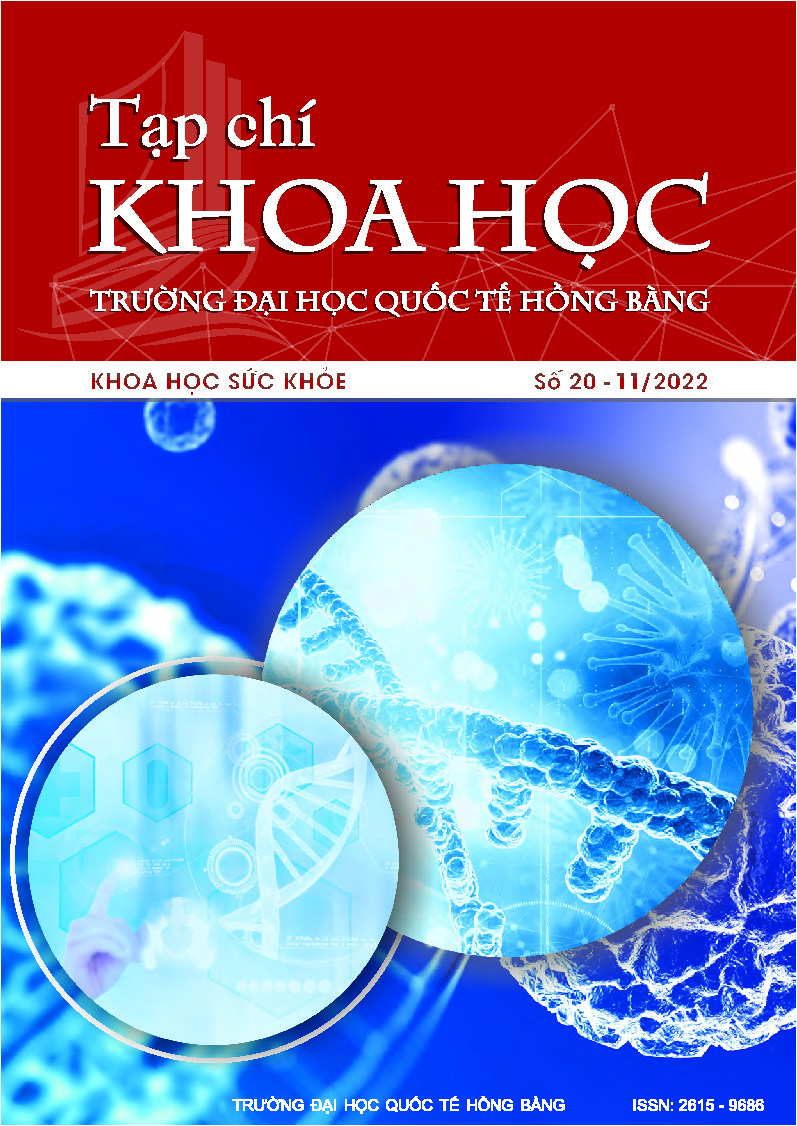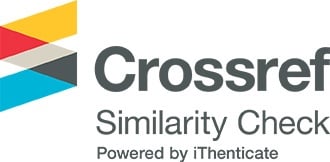Tổng quan Vai trò kháng thể kích thích tuyến giáp thyroid stimulating immunoglobulin (TSI) ở bệnh nhân cường giáp Basedow
Các tác giả
Từ khóa:
TSI, Globulin miễn dịch kích thích tuyến giáp, chẩn đoán, tiên lượngTóm tắt
Basedow là bệnh lý tuyến giáp do nguyên nhân miễn dịch, đặc trưng bởi cường chức năng tuyến giáp do xuất hiện các tự kháng thể lưu hành trong máu kích thích tế bào nang giáp làm tăng cường tổng hợp và giải phóng hormon tuyến giáp vào máu gây nên các biểu hiện nhiễm độc giáp trên lâm sàng [1]. Cơ chế sinh lý bệnh chính là làm thay đổi tính kháng nguyên, trình diện tự kháng nguyên lên bề mặt tế bào tuyến giáp, kích thích hệ miễn dịch sản xuất ra tự kháng thể kháng thụ thể tuyến giáp Thyroid Receptor Antibody (TRAb). TRAb là thuật ngữ chung chỉ 3 loại tự kháng thể xuất hiện trong bệnh Basedow là: Thyroid Stimulating Antibody (TSAb) - kháng thể kích thích tuyến giáp, Thyroid Blocking Antibody (TBAb) - kháng thể ức chế tuyến giáp và Thyroid Neutral Antibody (TNAb) - kháng thể không ảnh hưởng chức năng của tuyến giáp. Trong bệnh Basedow có sự xuất hiện của kháng thể kích thích TSAb, thúc đẩy tuyến giáp sản xuất nhiều hormone giáp. Chính vì tác dụng đó, nên TSAb còn có tên gọi khác là TSI (Thyroid Stimulating Immunoglobulin). Cả TSI và TRAb đều có thể được sử dụng để chẩn đoán bệnh cường giáp Basedow. Tuy nhiên, TSI là một xét nghiệm đặc hiệu, tốt hơn TRAb. TSI chỉ đo các kháng thể kích thích, trong khi TRAb đo cả kháng thể kích thích và kháng thể ức chế tuyến giáp.
Abstract
Basedow is an immune-induced thyroid disease, characterized by enhanced thyroid function by the appearance of self-antibodies circulating in the blood that stimulate thyroid follicle cells to enhance the synthesis and release of thyroid hormones into the bloodstream causing clinical manifestations of thyroid toxicity [1]. The main physiologic mechanism is to alter antigen properties, present antigens to the surface of thyroid cells, stimulate the immune system to produce antibody antibodies against thyroid receptor antibody (TRAb). TRAb is a general term for three types of autoantibodies that appear in Basedow's disease: Thyroid Stimulating Antibody (TSAb), Thyroid Blocking Antibody (TBAb) and Thyroid Neutral Antibody (TNAb) - antibodies that do not affect thyroid function. In Basedow's disease there is the appearance of antibodies that stimulate TSAb, which promotes the thyroid gland to produce more thyroid hormones. Because of this effect, TSAb is also known as TSI (Thyroid Stimulating Immunoglobulin). Both TSI and TRAb can be used to diagnose Basedow hyperthyroidism. However, TSI is a specific test, better than TRAb. TSI only measures excitatory antibodies, while TRAb measures both excitatory antibodies and thyroid inhibitor antibodies.
Tài liệu tham khảo
[1] A. Weetman, "Graves' disease," N Engl J Med, Vol. 343, No. 17, pp. 1236 - 1248, 2000, doi: 10.1056/nejm200010263431707.
[2] B. T. T. Mai và V. B. Nga, "Tăng men gan ở bệnh nhân Basedow," Tạp chí nội tiết, Tập 43, tr. 104 -109, 2020.
[3] N. K. Trạch, Bệnh học nội khoa, Trường Đại Học Y Hà Nội, Các Bộ môn Nội, 2017.
[4] P. A. McKee and P. F. Peyerl, "TSI Assay Utilization: Impact on Costs of Graves' Hyperthyroidism Diagnosis," The American Journal of Managed Care, Vol. 18, No. 1, 2012.
[5] X. C. X. Cheng, C. Ma and X. Lian, "Clinical diagnostic performance of a fully automated TSI immunoassay vs. that of an automated anti‑TSHR immunoassay for Graves' disease: a Chinese multicenter study," Endocrine, Vol. 71, No. 1, pp. 139 - 148, 2021. DOI: 10.1007/s12020-020-02386-2.
[6] N. H. Thuỷ, Bệnh nội tiết chuyển hóa, Nhà xuất bản Giáo dục Việt Nam, 2015.
[7] H. B. G. J. Kahaly, W. Berg and M. Dittmar "Alpha-fodrin as a putative autoantigen in Graves' ophthalmopathy," Clin Exp Immunol, Vol. 140, No. 1, pp. 166 - 172, 2005. DOI: 10.1111/j.1365-2249.2005.02750.x.
[8] T. H. Quang, "Lồi mắt do bệnh Graves, tiếp cận điều trị đích phân tử, giới thiệu hai thuốc mới Teprotumumab và Rituximab," Hội Nội Tiết - Đái tháo đường Việt Nam, Tập 49, tr. 1 - 15, 2021. DOI: 10.47122/vjde.2021.49.1.
[9] M. G. F. González and M. Sagrado, "Population-specific reference values for thyroid hormones on the Abbott ARCHITECT i2000 analyzer," Clin Chem Lab Med, Vol. 42, No. 5, pp. 540 - 542, 2004. DOI: 10.1515/CCLM.2004.091.
[10] T. H. K. D. D. Adams, " Occurrence in Thyrotoxicosis of a Gamma Globulin Which Protects LATS from Neutralization by an Extract of Thyroid Gland," The Journal of Clinical Endocrinology & Metabolism, Vol. 27, No. 2, pp. 173 - 177, 1967. DOI: 10.1210/jcem-27-2-173.
[11] J. P. Kriss, V. Pleshakov and J. R. Chien, "Isolation and Identification of the Long-Acting Thyroid Stimulator and Its Relation to Hyperthyroidism and Circumscribed Pretibial Myxedema1," The Journal of Clinical Endo-crinology & Metabolism, Vol. 24, No. 10, pp. 1005-1028, 1964. DOI: 10.1210/jcem-24-10-1005.
[12] J. B. S. W. Manley and R. W. Hawker, "The thyrotrophin receptor in guinea-pig thyroid homogenate: interaction with the long-acting thyroid stimulator," J Endocrinol, Vol. 61, No. 3, pp. 437 - 445, 1974. DOI: 10.1677/joe.0.0610437.
[13] A. L. Ogilvy-Stuart, "Neonatal thyroid disorders," Fanaroff and Martin's Neonatal-Perinatal Medicine, Vol. 87, No. 3, pp. 165 - 171, 2002. DOI: 10.1136/fn.87.3.F165.
[14] D. S. Cooper and P. Laurberg, "Hyperthyroidism in pregnancy," The Lancet Diabetes & Endocrinology, Vol. 1, No. 3, pp. 238 - 249, 2013. DOI: 10.1016/s2213-8587(13)70086-x.
[15] H. K. Ước và L. H. Hoa, "Báo cáo nghiên cứu khoa học giá trị của xét nghiệm TSI trong chẩn đoán bệnh cường giáp thai kỳ," Bệnh viện Nội tiết Trung ương, 2021.
[16] R. S. B. Chair, H. B. Burch, D. S. Cooper... N. S. Marius, "Hyperthyroidism and other causes of thyrotoxicosis: management guidelines of the American Thyroid Association and American Association of Clinical Endocrinologists," Thyroid, Vol. 21, No. 6, pp. 593 - 646, 2011. DOI: 10.1089/thy.2010.0417.
[17] S. D. Lytton, K. A. Ponto, M. Kanitz, N. Matheis... G. J. Kahaly, "A novel thyroid stimulating immunoglobulin bioassay is a functional indicator of activity and severity of Graves' orbitopathy," J Clin Endocrinol Metab, Vol. 95, No. 5, pp. 2123 - 2131, 2010. DOI: 10.1210/jc.2009-2470.
[18] K. A. Ponto, M. Kanitz, P. D. Olivo... G. J. Kahaly, "Clinical relevance of thyroid-stimulating immunoglobulins in graves' ophthalmopathy," Ophthalmology, Vol. 118, No. 11, pp. 2279-2285, 2011, DOI: 10.1016/j.ophtha.2011.03.030.
[19] Y. Zhou, M. Zhou, Y. Qi... S. Wang, "The prognostic value of thyroid-stimulating immunoglobulin in the management of Graves' disease," Ther Adv Endocrinol Metab, Vol. 12, pp. 1 - 9, 2021. DOI: 10.1177/20420188211044943.
[20] T. D. S. Allelein , M. Ehlers, M. Kanitz... G. J. Kahaly, "Comparison of a Bridge Immunoassay with Two Bioassays for Thyrotropin Receptor Antibody Detection and Differentiation," Horm Metab Res, Vol. 51, pp. 341 - 346, 2019. DOI: 10.1055/a-0914-0535.
[21] S. D. Lytton, Y. Li, P. D. Olivo, L. D. Kohn and G. J. Kahaly, "Novel chimeric thyroid-stimulating hormone-receptor bioassay for thyroid-stimulating immunoglobulins," Clin Exp Immunol, Vol. 162, No. 3, pp. 438 - 346, 2010. DOI: 10.1111/j.1365-2249.2010.04266.x.
[22] C. U. Frank, S. Braeth, J. W. Dietrich, D. Wanjura and U. Loos, "Bridge Technology with TSH Receptor Chimera for Sensitive Direct Detection of TSH Receptor Antibodies Causing Graves' Disease: Analytical and Clinical Evaluation," Horm Metab Res, Vol. 47, No. 12, pp. 880-888, 2015. DOI: 10.1055/s-0035-1554662.
[23] N. B. D. Kiaei, S. C. Montgomery, B. Zhang, S. Thompson and J. Lei, "Analytical and Clinical Performance of IMMULITE 2000 TSI Assay," Siemens Healthcare Diagnostics, 2016.
Tải xuống
Tải xuống: 148







